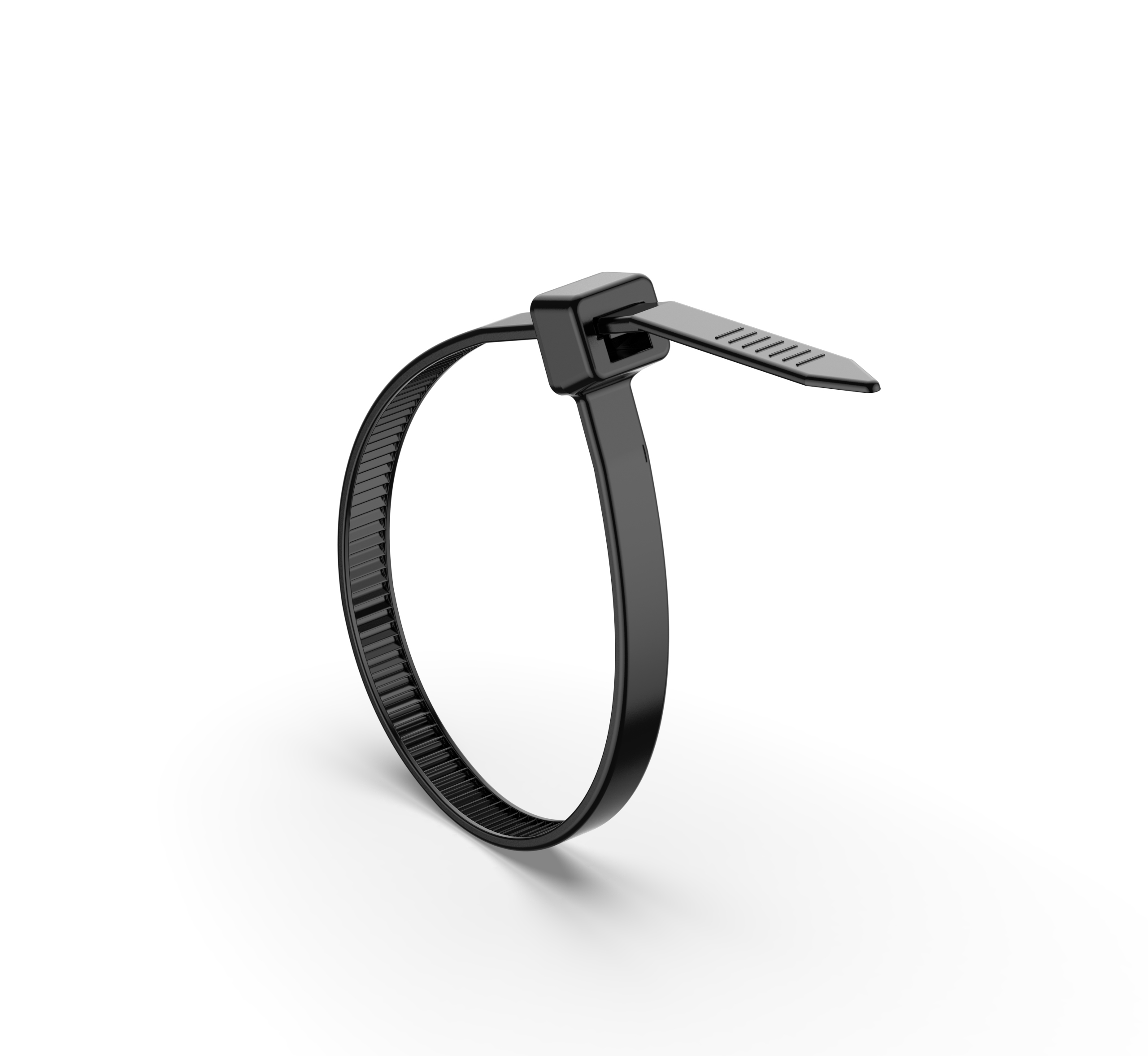Tel
0577-62795555
Tel
0577-62795555
As we all know, cable ties have become an important binding material in industrial production and daily life, and are widely used in various industries. Cable ties can be divided into nylon cable ties (also known as plastic cable zip ties) and stainless steel cable ties according to their materials.
Plastic cable zip ties were invented by Thomas & Betts, Inc. in 1958. They were originally designed for standard wiring on Boeing airplanes. Due to their convenience and low cost, after many years of promotion and development, they have been widely accepted and now there are a large number of plastic tie lock manufacturers around the world. Though traditional plastic cable zip ties are convenient to use and low-cost, they also have many disadvantages, such as:
Low tensile strength. Plastic cable zip ties are generally used for wiring, as long as they can bundle the wires together, but they cannot be used in places where high tensile strength is required, because the general size of plastic cable zip ties are just for wiring. Leather cable ties usually only have tensile strength of a few tens of kilograms;
Short service life. Plastic cable zip ties are mainly suitable for indoor use. In outdoor environments with high temperature, humidity, and strong ultraviolet light, nylon materials are prone to aging, and will break after a period of use, which cannot guarantee good safety;
Limited applications. Nylon materials cannot be used in extremely low or high-temperature environments, etc.

Therefore, a stainless steel cable tie made of stainless steel has emerged. Compared with nylon cable ties, ss zip ties have the following advantages:
High tensile strength, with a tensile strength of over 1.5 tons, and there are several sizes to choose from according to different usage environments and requirements;
Long service life. Stainless steel materials have different grades. Stainless steel with 316 or higher grades can be used outdoors for more than ten years and has good corrosion resistance and oxidation resistance in various harsh environments;
Wide range of applications, different sizes and material grades of stainless steel cable ties can be applied to various environments.
Stainless steel is divided into three types: austenitic stainless steel, ferritic stainless steel, and martensitic stainless steel.
.jpg)
Austenitic stainless steel contains 16% to 26% chromium, lower than 35% nickel, usually has the highest corrosion resistance, cannot be strengthened by heat treatment, and is non-magnetic. The most common type is 18/8 or 304 grade, which contains 18% chromium and 8% nickel. Austenitic stainless steel cable ties are typically include aircraft cable ties, dairy and food processing industry cable ties.
Standard ferritic stainless steel contains 10.5%-27% chromium, but it does not contain nickel. Due to its low carbon content (less than 0.2%), it cannot be strengthened by heat treatment. Ferritic stainless steel cable ties are only used in construction, automotive decoration, and other occasions where corrosion resistance is not required.
Martensitic stainless steel usually contains 11.5%-18% chromium and less than 1.2% carbon, and sometimes also contains nickel. It can be strengthened by heat treatment and has medium corrosion resistance. Martensitic stainless steel cable ties can be used for cutting tools, surgical instruments, wrenches, and turbines.
Related Cable Tie Articles



